|
View as a webpage
|
  Trona Pinnacles, Ridgecrest Field Office
|
|
ISSUE 892- March 6, 2020
|
|
|
- Recreation and Public Access
- Headlines and Highlights
- BLM and DOI Highlights
- Wildlife Question of the Week
- Upcoming Events

BLM California remembers longest serving state director
Ed Hastey, former state director of the U.S. Bureau of Land Management (BLM) in California whose 40-year career left a lasting mark on the management of public lands in the state, has died.
Hastey, the longest serving state director of the BLM California, was dedicated to the agency’s multiple-use mission and made conservation a proud part of the agency’s legacy. He is credited with, among other things, multiple land acquisitions and co-founding the California Biodiversity Council with former California Resources Secretary Doug Wheeler. (BLM news release) (BLM CA Facebook photo story)
|
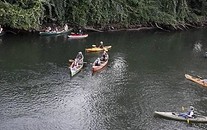
Guided Paddle along the Cosumnes River
Join experienced naturalists for a leisurely paddle up the Cosumnes River and its peaceful sloughs. We’ll likely see forest birds, raptors, egrets, herons, cormorants, and maybe deer, a beaver and/or an otter. (CRP Facebook)
|

Eight places to see wildflowers in Southern California
Blossoms begin to pop in March in Southern California but nature is unpredictable, and this year we’ve had nowhere near the rain that led to last year’s super bloom. Even so, the beauty of even small patches of wildflowers will warm the heart. Here’s where to go to break free of Jack Frost’s gloom. (LA Times)
|

Free presentation set on California Marine Protected Areas
Information on northern California’s marine protected areas will be offered in a free presentation, Sunday, March 22, from 3 to 5 p.m., at the Healy Senior Center, 456 Briceland Road in Redway. (BLM news release)
|
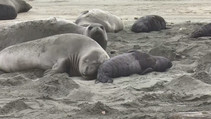
Hearst San Simeon State Park recruiting new elephant seal volunteers
Hearst San Simeon State Park is now seeking new volunteers to educate visitors about the northern elephant seal. These volunteers must be wildlife enthusiasts who enjoy sharing fascinating stories about these one-of-a-kind marine mammals and their unique life cycle.
California State Parks and Recreation said that the elephant seal spends eight to ten months of the year in the open ocean. There, the seals dive up to 17 football field lengths deep to hunt and escape predators making them one of the longest traveling marine mammals in the world. (KEYT.com)
|

Trespass clean up restores BLM public lands in Nevada County
The BLM Mother Lode Field Office, in partnership with the Nevada County Environmental Health, Code Enforcement Office and Sheriff’s Office, have restored roughly five acres of public and private lands in western Nevada County to a healthy environment. (BLM news release)
|

Prescribed burn at Fish Slough
Last weekend, The BLM California Bishop Field Office partnered with U.S. Forest Service - Inyo National Forest to complete a prescribed broadcast burn of 85 acres at Fish Slough near Bishop. Prescribed fire operations reduce tule accumulations, increase open water habitat for Owens pupfish, and encourage new vegetation growth to support other species dependent on this desert wetland. (BLM CA Facebook)
|

The BLM seeks public comment on the Lugo-Victorville telecommunications project
The Bureau of Land Management is seeking public comment on construction and installation of telecommunications facilities within three Southern California Edison (SCE) rights-of-way, which crosses public lands in California and Nevada. The 30-day public comment period on the Environmental Assessment ends on March 30. (BLM news release)
|

Don't Forget to Celebrate Plants on World Wildlife Day
Each year, World Wildlife Day is celebrated on March 3rd. The date was chosen to commemorate the signing of the Convention on International Trade in Endangered Species of Wild Fauna and Flora. While many people use the opportunity to rightly celebrate the awesomeness of animals like elephants, jaguars, whales, and parrots, this year we want to give plants their due on World Wildlife Day! (DOI news release)
|

Interior women make more history
March is Women’s History Month, and we’re highlighting notable firsts for women at Interior and our bureaus. From the past to the present, women at Interior blazed a trail to help the Department achieve its mission managing the nation's natural resources and cultural heritage, pursuing cutting-edge science, and honoring trust responsibilities to American Indians, Alaska Natives and affiliated island communities. (DOI news release)
|
|

This Week at Interior, March 6, 2020
This Week: Fourth of July fireworks are one step closer to returning to Mount Rushmore National Memorial; Secretary Bernhardt testified on Capitol Hill on the President’s Fiscal Year 2021 Budget Request; the Secretary joined top Interior officials to discuss the EPA’s National Water Reuse Action Plan; and more! (DOI video)
|

Migratory super birds
As spring approaches, bringing with it beautiful weather and wildlife, what better way to think about the changing of the season than with some fun facts about migratory birds, but first test your bird knowledge.
What is the longest migration of any bird in the world?
Keep scrolling to find the answer.
|

BLM seeks comments on 2020 off-highway vehicle recreation proposals
The Bureau of Land Management is seeking public comments on the California State Parks, Off-Highway Motor Vehicle Recreation Division, off-highway vehicle recreation proposals, which are available for review from March 3 to May 4 (BLM news release)
|
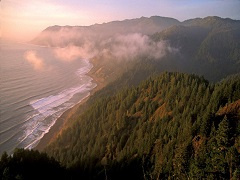
BLM announces artist in residence opportunity at King Range National Conservation Area
Applications are now being accepted until Friday, March 6, from artists interested in becoming an artist in residence at the King Range National Conservation Area on California’s Lost Coast. The AIR program is sponsored by the BLM and the Shelter Cove Arts and Recreation Foundation. (BLM news release)
|

BLM seeks public comment for the Camino Solar Project in Kern County
Deadline for submitting comments is March 16
The Bureau of Land Management, Ridgecrest Field Office, is seeking public comments on the Camino Solar Project located in the Antelope Valley, west of Rosamond in Kern County. (BLM news release)
|
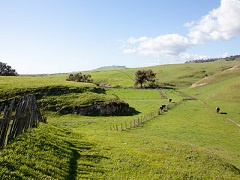
BLM seeks public input on draft Cotoni-Coast Dairies management plan
The 30-day public review period ends on March 19.
The Bureau of Land Management Central Coast Field Office is seeking public input on an environmental assessment and draft amendment to the Resource Management Plan for the California Coastal National Monument that will provide management direction for Cotoni-Coast Dairies public lands in Santa Cruz County. (BLM news release)
|
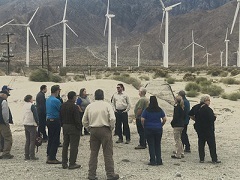
BLM Desert Advisory Council to meet in El Centro, April 3-4
The Bureau of Land Management will hold a field tour and public meeting of the BLM California Desert District Advisory Council, consistent with BLM’s commitment to partnerships and public input necessary for managing sustainable, working public lands. (BLM news release)
|
|
Wildlife Question of the Week Answer
The Arctic tern has the longest migration of any bird in the world. These black-capped, red-billed birds can fly more than 49,700 miles in a year.
The time it takes a single bird to complete its one-way migration can range from a few days or weeks to up to four months. Birds may fly from 15 to 600 miles or more per day during migration.
While most migrating birds fly at heights lower than 2,000 feet, birds have been recorded migrating at up to 30,000 feet high, a record held by the bar-headed goose.
The award for fastest bird goes to the great snipe: It flies around 4,200 miles at speeds of up to 60 mph!
The rufous hummingbird has the longest migration of any hummingbird species: a one-way trip of 3,000 miles between its breeding grounds in Alaska and its winter range in Mexico.
Even birds that don’t fly migrate. Emus, the large Australian birds, often travel for miles on foot to find food, and many populations of penguins migrate by swimming
Related Links: The Spruce, Audubon,
|
|
|
News.Bytes is a publication of the Bureau of Land Management in California.
Bureau of Land Management
California State Office
2800 Cottage Way, Suite W1623
Sacramento, CA 95825
(916) 978-4600
Send comments to the News.Bytes Team | Subscribe to News.Bytes | Unsubscribe
|
     
|
|
|